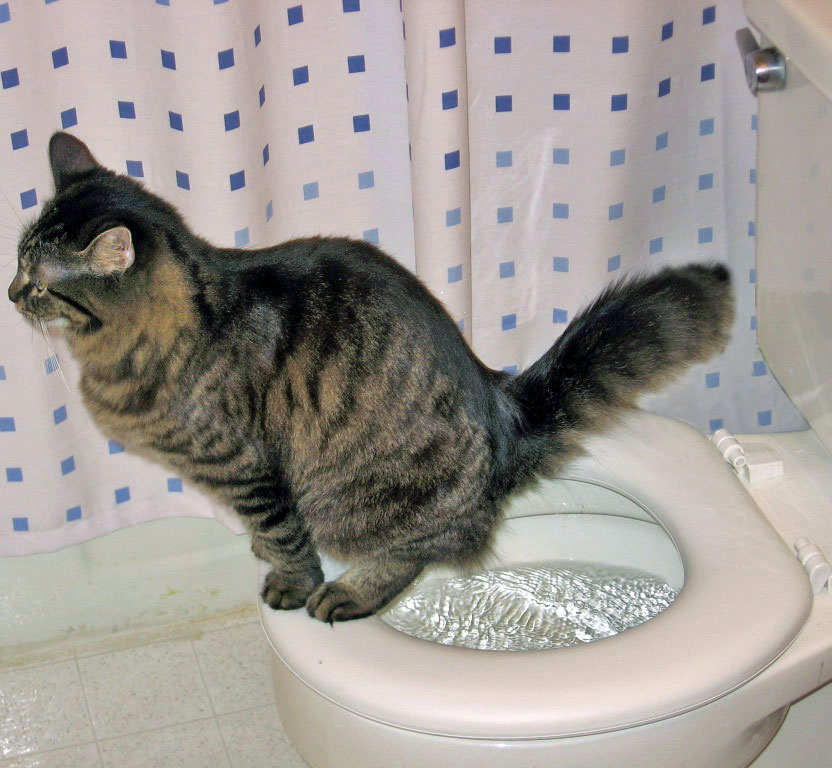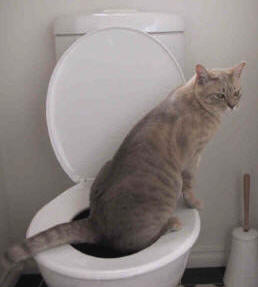Dangers of Flushing Cat Poop Down Your Toilet - Prevent Possible Issues
Dangers of Flushing Cat Poop Down Your Toilet - Prevent Possible Issues
Blog Article
We have stumbled upon this post involving Can You Flush Cat Poop Down The Toilet? directly below on the web and believe it made good sense to talk about it with you in this article.

Introduction
As cat proprietors, it's necessary to bear in mind just how we dispose of our feline close friends' waste. While it might appear convenient to purge feline poop down the toilet, this technique can have damaging repercussions for both the setting and human health and wellness.
Ecological Impact
Flushing pet cat poop introduces harmful virus and bloodsuckers right into the supply of water, posing a considerable danger to aquatic communities. These contaminants can negatively impact aquatic life and concession water quality.
Health and wellness Risks
Along with environmental concerns, purging feline waste can additionally posture health and wellness dangers to human beings. Pet cat feces may consist of Toxoplasma gondii, a parasite that can cause toxoplasmosis-- a possibly extreme health problem, specifically for expecting females and people with weakened immune systems.
Alternatives to Flushing
Fortunately, there are more secure and extra liable means to throw away cat poop. Take into consideration the complying with options:
1. Scoop and Dispose in Trash
The most usual approach of getting rid of cat poop is to scoop it into a biodegradable bag and toss it in the trash. Make certain to utilize a dedicated litter scoop and take care of the waste quickly.
2. Usage Biodegradable Litter
Choose eco-friendly cat clutter made from products such as corn or wheat. These trashes are environmentally friendly and can be securely taken care of in the garbage.
3. Hide in the Yard
If you have a backyard, consider burying feline waste in an assigned location far from veggie gardens and water resources. Make sure to dig deep sufficient to avoid contamination of groundwater.
4. Set Up a Pet Waste Disposal System
Purchase a pet garbage disposal system specifically created for feline waste. These systems make use of enzymes to break down the waste, minimizing smell and ecological influence.
Conclusion
Accountable animal ownership expands beyond providing food and shelter-- it likewise involves appropriate waste administration. By refraining from flushing cat poop down the commode and choosing alternative disposal methods, we can minimize our environmental impact and safeguard human wellness.
Why Can’t I Flush Cat Poop?
It Spreads a Parasite
Cats are frequently infected with a parasite called toxoplasma gondii. The parasite causes an infection called toxoplasmosis. It is usually harmless to cats. The parasite only uses cat poop as a host for its eggs. Otherwise, the cat’s immune system usually keeps the infection at low enough levels to maintain its own health. But it does not stop the develop of eggs. These eggs are tiny and surprisingly tough. They may survive for a year before they begin to grow. But that’s the problem.
Our wastewater system is not designed to deal with toxoplasmosis eggs. Instead, most eggs will flush from your toilet into sewers and wastewater management plants. After the sewage is treated for many other harmful things in it, it is typically released into local rivers, lakes, or oceans. Here, the toxoplasmosis eggs can find new hosts, including starfish, crabs, otters, and many other wildlife. For many, this is a significant risk to their health. Toxoplasmosis can also end up infecting water sources that are important for agriculture, which means our deer, pigs, and sheep can get infected too.
Is There Risk to Humans?
There can be a risk to human life from flushing cat poop down the toilet. If you do so, the parasites from your cat’s poop can end up in shellfish, game animals, or livestock. If this meat is then served raw or undercooked, the people who eat it can get sick.
In fact, according to the CDC, 40 million people in the United States are infected with toxoplasma gondii. They get it from exposure to infected seafood, or from some kind of cat poop contamination, like drinking from a stream that is contaminated or touching anything that has come into contact with cat poop. That includes just cleaning a cat litter box.
Most people who get infected with these parasites will not develop any symptoms. However, for pregnant women or for those with compromised immune systems, the parasite can cause severe health problems.
How to Handle Cat Poop
The best way to handle cat poop is actually to clean the box more often. The eggs that the parasite sheds will not become active until one to five days after the cat poops. That means that if you clean daily, you’re much less likely to come into direct contact with infectious eggs.
That said, always dispose of cat poop in the garbage and not down the toilet. Wash your hands before and after you clean the litter box, and bring the bag of poop right outside to your garbage bins.
https://trenchlesssolutionsusa.com/why-cant-i-flush-cat-poop/

As a passionate reader on Don’t flush cat feces down the toilet, I was thinking sharing that piece of content was a good idea. So long as you appreciated our article plz remember to pass it around. We recognize the value of reading our article about Can You Flush Cat Poo or Litter Down the Toilet?.
View Website Report this page